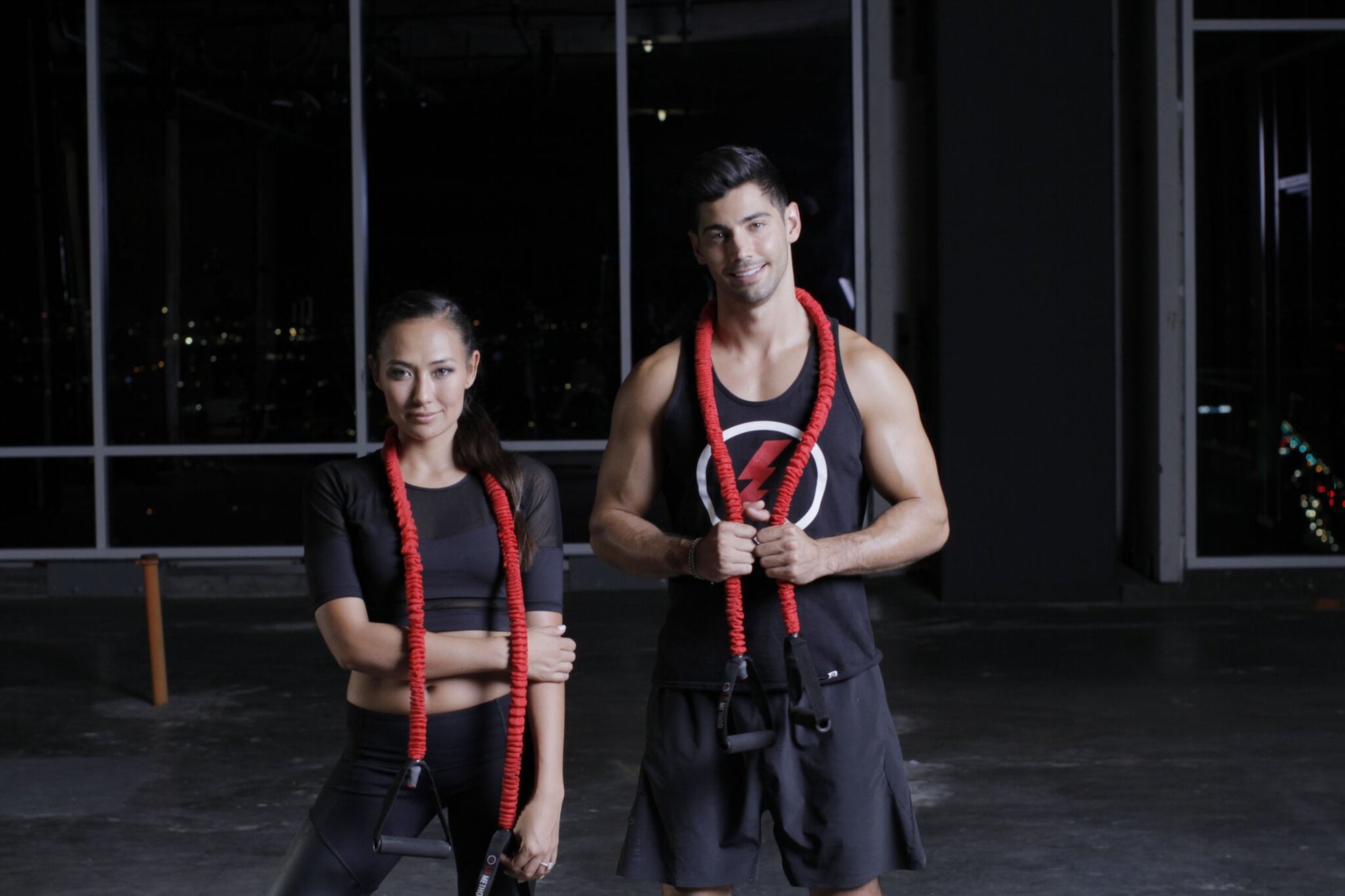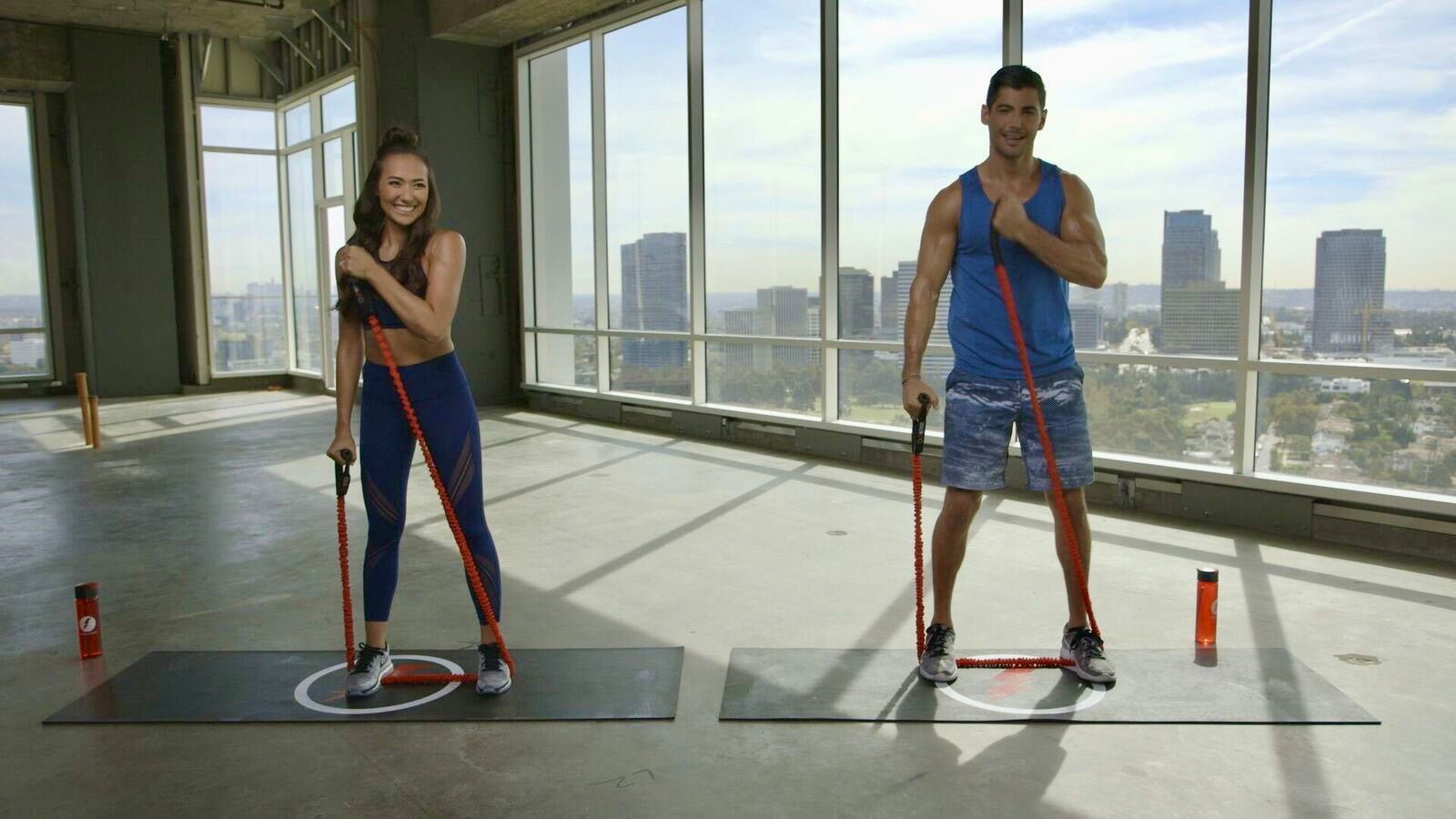If you have any experience with exercising or any athletic activity, you are aware of post workout muscle soreness. Everyone new to working or training faces muscle soreness, so we have the "no pain, no gain" analogy.
The discomfort from physical activities such as physically challenging workouts results from tiny muscle tears and inflammation due to intense exercise. It is also known as delayed onset muscle soreness (DOMS). However, it's not necessary that you have to have sore muscles for long; there are techniques to manage post workout muscle soreness.
Here, we explore effective strategies to recover from soreness of muscles after workout.
6 Things to do to get relief from post workout muscle soreness
1. Hydrate your body
The human body is 60% water, and our muscles are 79% water; this is why proper hydration is crucial not only for overall well-being but also for muscle recovery. During any physical activity, our body starts losing water through sweating, and if not adequately hydrated, it can lead to potential dehydration.
As most content of our muscles is water, dehydration can exacerbate post workout muscle soreness. One of the most effective ways of muscle soreness recovery is to maintain adequate hydration levels. Ensure to drink enough water before, during, and after your workouts. It helps flush out toxins and support the body's natural healing process by facilitating blood circulation and delivery of nutrients to muscle cells.
According to the Institute of Medicine, adequate daily water intake for adults ranges from about 2.7 liters (91 ounces) for women to 3.7 liters (125 ounces) for men. This intake volume depends on factors like climate and physical activity level.
2. Include protein in your meals
Protein is a fundamental building block for muscles, and it is a prerequisite for muscle repair and growth. When you include enough protein in your post-workout meals, it aids the recovery process.
Muscle soreness and recovery can be easily managed through a protein-rich diet, such as lean meats, eggs, and dairy products. If you are a vegetarian, include plant-based protein sources like beans and tofu in your meals to facilitate the repair of damaged muscle fibers and support muscle recovery.
Protein consumption reduces post workout muscle soreness by providing the essential amino acids that minimize muscle damage markers. On average, you should include 1.2 to 2.2 grams of protein per kilogram of body weight in your meals if you regularly exercise. Athletes may require even more protein to support their muscle recovery needs.
3. Massage your muscles with ice
A practical remedy is to apply ice on the affected region. Ice massages or cold compresses can reduce inflammation and relieve muscle soreness by minimizing inflammation and constricting blood vessels in the region. This is why cryotherapy (cold therapy) is so popular among athletes because it decreases muscles' inflammatory response and limits muscle damage.
You can either take ice baths or apply an ice pack to the affected areas for 15-20 minutes. If you are using an ice pack, it is recommended to use a cloth or towel as a barrier to prevent frostbite. Massaging sore muscles is particularly beneficial in the first 48 hours after an intense workout.
4. Sleep well
Sleep is a critical component of recovery from post workout muscle soreness. Quality sleep sessions put the body into a deep state that stimulates the release of growth hormone. This amino acid-rich hormone is responsible for the growth and development of the body and plays a vital role in repairing and rebuilding muscle tissue.
Several studies conclusively found that sleep deprivation impairs muscle recovery and performance. If you want to aid muscle soreness recovery, aim for 7-9 hours of restful sleep each night. This is how you can support the body's natural healing process and reduce the duration and intensity of muscle soreness.
5. Perform stretching exercises
A great way to minimize soreness of muscles after workout is to prepare them for an intense training session with proper stretching exercises. Stretching exercises promote blood circulation and flexibility, reducing muscle stiffness. You should also include static stretching in your post-workout routine.
In this form of stretching, you hold each stretch for 15-30 seconds. For faster muscle sore recovery, pay particular attention to stretching the most sore muscle groups.
To easily target sore muscles, you can use a resistance band. These bands are elastic tools that use resistance to challenge and stretch muscles. LIT AXIS is a resistance band system that can significantly improve your stretching.
~[[lit-axis-cherry]]
Its built-in sensors monitor your reps, time under tension, pounds lifted, etc., to ensure you accurately target muscles.

It also detects and notifies any muscle imbalance to ensure that your soreness is not worsened due to bad posture or muscle imbalance. Stretching with LIT AXIS enhances the range of motion and improves blood flow, which helps in the faster delivery of nutrients to muscles.
6. Keep moving
The soreness of muscles after workout prompts us all to rest. At the same time, it is essential to perform gentle activities for recovery. The low-intensity activities can be even better to help increase blood flow to your sore muscles.
Activities like walking, cycling, or swimming after a workout are known to remove waste products from muscles, which reduces post workout muscle soreness and promotes circulation. This aids in delivering nutrients and oxygen to the muscles without overtaxing them. These low-impact activities can provide a soothing effect and enhance the recovery process.
Almost 89% of trainers incorporate light activities into a recovery routine for athletes to improve their muscle recovery.
Is it alright to take pain medication for sore muscle recovery?
Muscle soreness, particularly delayed onset muscle soreness (DOMS), can be uncomfortable. This can tempt many individuals to consider using pain medication to alleviate their discomfort. While over-the-counter (OTC) pain medications can help with muscle soreness recovery, they are not advised for several reasons unless your pain is too excruciating.
Most OTC medications available for immediate relief, like ibuprofen, are nonsteroidal anti-inflammatory drugs or NSAIDs. Such medications provide rapid relief from muscle soreness by blocking the inflammatory process, but your body needs this inflammatory response to repair muscles.
Several studies have found that long-term use of NSAIDs for preventing muscle soreness can lead to adverse effects such as a high risk of kidney damage.
Therefore, your best bet for muscle soreness and recovery is to stick to natural remedies like those listed above.
When to see a doctor for muscle soreness?
For most individuals, post workout muscle soreness is normal and can be managed without explicit medical treatment. However, one should consider visiting a doctor in these situations:
- Muscle soreness doesn't improve even after a few days.
- You start experiencing severe, persistent muscle pain that limits your range of motion.
- Any unusual symptoms like swelling, redness, or warmth appear in the affected area.
- Individuals with a history of medical conditions such as cardiac diseases or take medications that might interact with their workout.
Is it advisable to continue working out when experiencing muscle soreness, or is rest recommended?
To continue working out when you are experiencing muscle soreness depends on the severity of muscle soreness and your tolerance. In most cases, light to moderate exercise can be beneficial for promoting blood flow and reducing stiffness.
However, it is advisable to avoid targeting the same muscle groups with high-intensity workouts until soreness subsides. You should practice 'listening to your body' and adjust your workout routine accordingly.
Conclusion
Post workout muscle soreness is a common and often unavoidable part of training. It is significantly more intense when pushing your body to new limits.
However, it doesn't require any medication or doctor visits in most cases, and with the right strategies and practices, you can reduce the intensity and duration of post-workout soreness. Consistency, patience, and proper self-care are key to bounce back faster and continue on your fitness journey.
FAQs
1. Is muscle soreness a sign of an effective workout?
Yes, muscle soreness indicates that you're challenging your muscles and initiating the process of growth and adaptation. This is especially true when trying new exercises or increasing the intensity of your routine.
2. Can regular exercise help reduce the frequency and intensity of post workout muscle soreness over time?
Yes, consistency is critical to allowing your body to adapt to regular exercise. It will result in less frequent and less intense muscle soreness. This phenomenon is often referred to as the "repeated bout effect."
3. How does age and fitness level affect the likelihood and intensity of post-workout muscle soreness?
Older individuals and those less physically active generally experience more intense and prolonged muscle soreness due to several factors. However, with consistent exercise, they can train their muscles and reduce the impact of soreness.
4. What are the differences between acute muscle soreness (immediately after a workout) and delayed onset muscle soreness (DOMS) that appears 24-48 hours after exercise?
Apart from the period of occurrence, the significant difference between the two is that acute muscle soreness occurs due to accumulated waste products in muscles. At the same time, DOMS results from micro-tears in muscle fibers.
5. How long does post-workout muscle soreness typically last?
It varies from person to person and depends on their fitness level. However, usually, muscle soreness lasts between 24 hours to a few days. In severe cases, it can persist for up to a week.
6. Is there a relationship between the intensity of a workout and the severity of muscle soreness?
Yes, more intense or unfamiliar workouts will more likely result in significant muscle soreness. This is why you should gradually increase the intensity to manage its severity.
7. Are there specific exercises or workout routines that tend to cause more muscle soreness than others?
Eccentric movement exercises such as squats and lunges that involve muscle lengthening under tension often cause more soreness.




